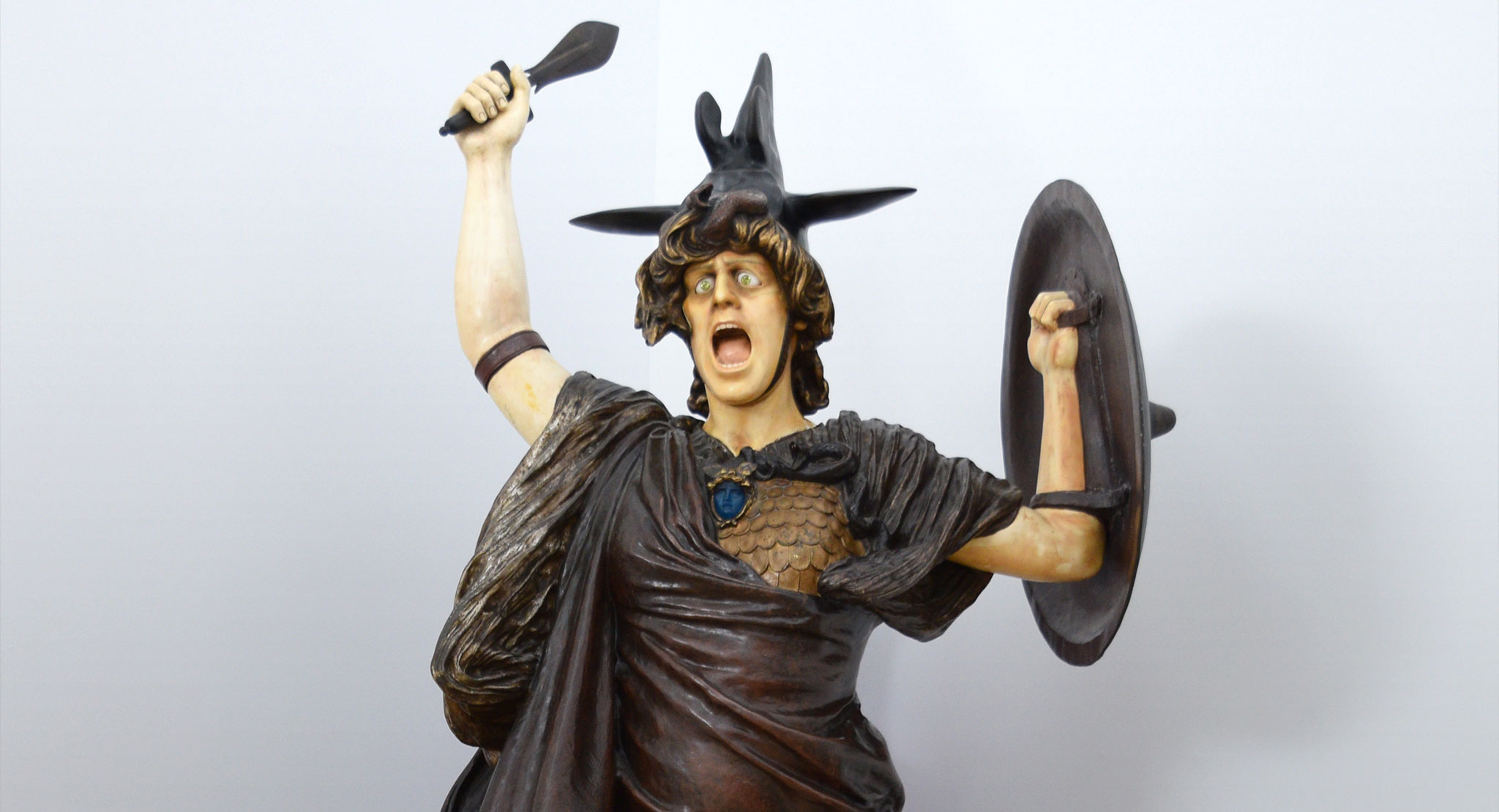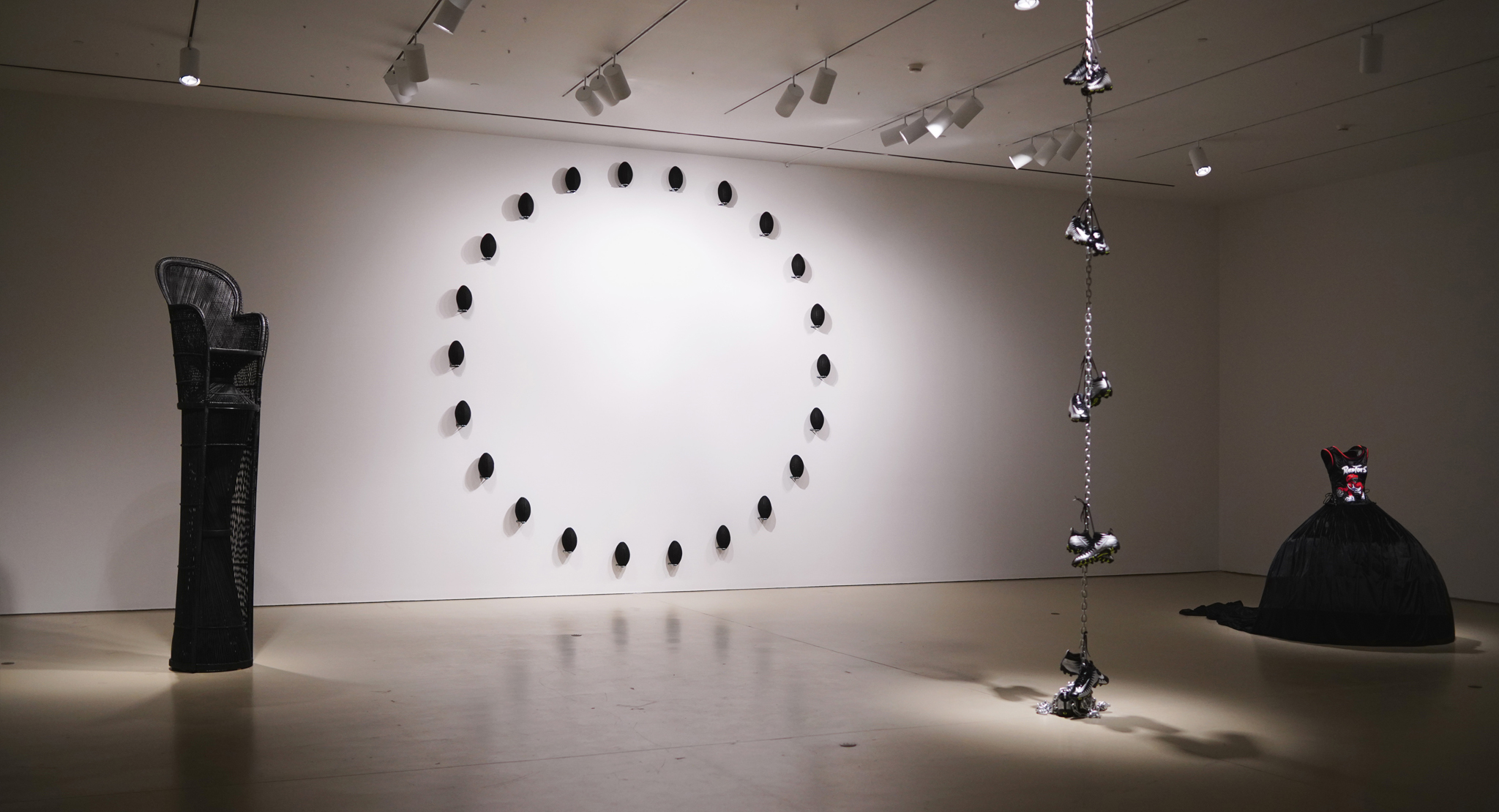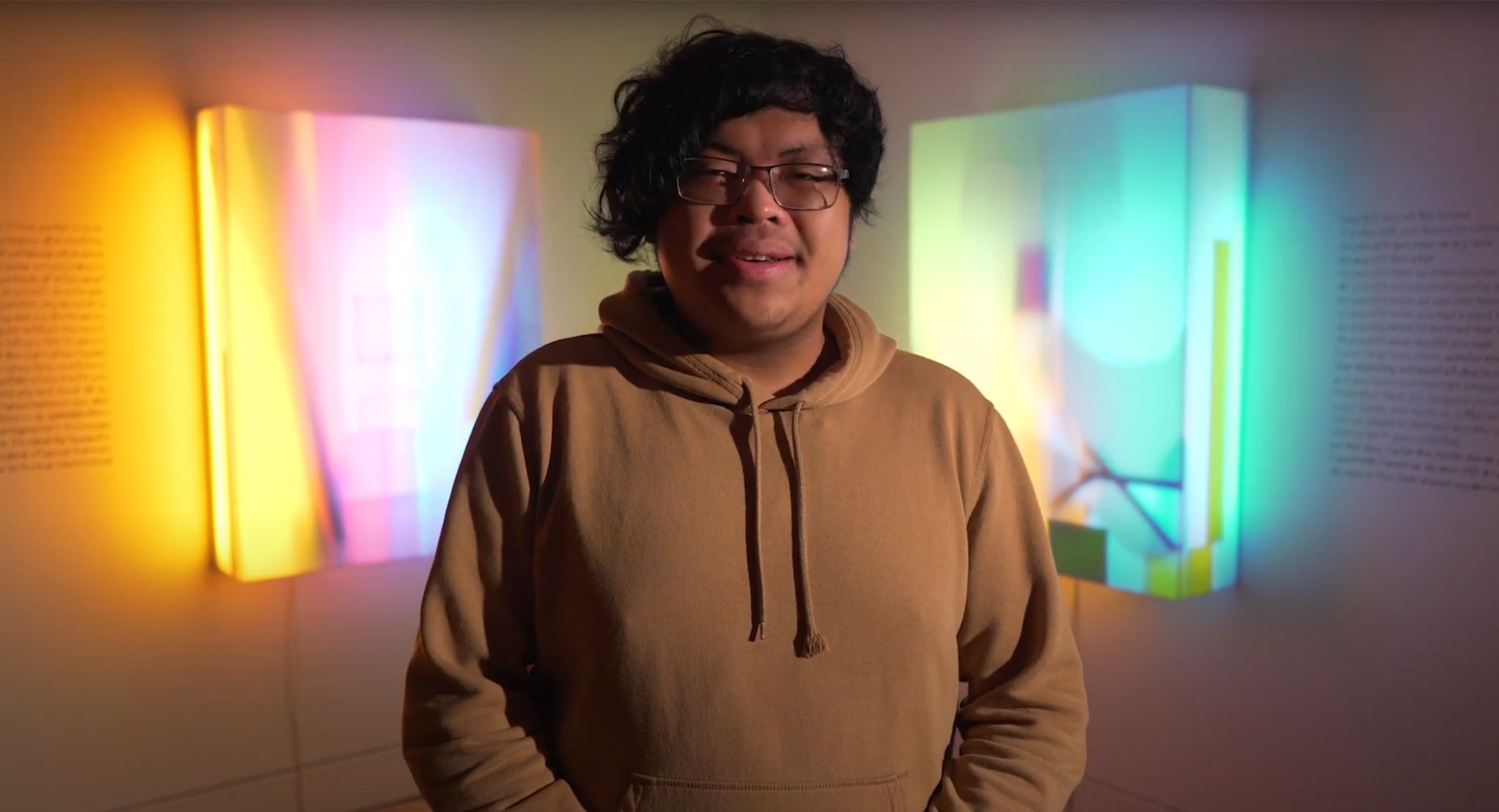Bellona, the Ancient Roman Goddess of war, proudly adorned the lobby of Toronto’s luxurious Four Seasons Hotel during the 1970s and ’80s. The life-size bronze and ivory statue bedecked with precious gems welcomed visitors with open arms holding a large shield and dagger. This sculpture is prominently exhibited on the second floor of the Art Gallery of Hamilton in the David Braley and Nancy Gordon Sculpture Atrium.
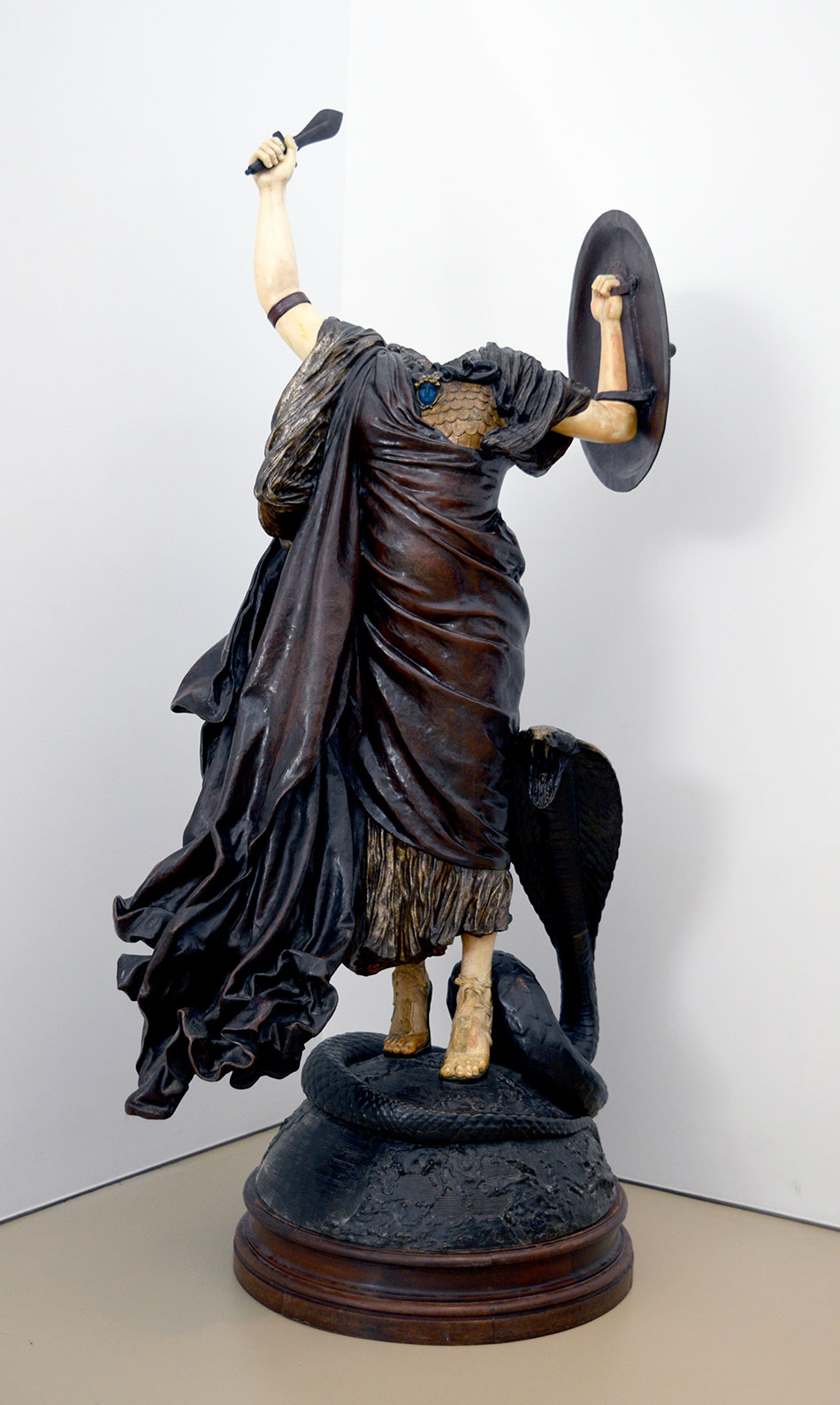
Designed by the 19th-century French painter and sculptor Jean-Léon Gérôme, the multi-media statue was ridiculed upon its unveiling at the 1893 Royal Academy Exhibition in London. Bellona was scoffed at by younger artists who promoted non-historical and increasingly abstract subjects drawn from modern life. The work was scorned in particular for the exotic and frightening face with its open mouth, pronounced jaw line, recessed eyes with emerald pupils and above all Bellona’s flamboyant gestures. Making her ever more shocking, the warrior Goddess is encircled by a giant king cobra with ribs spread and fangs out waiting to pounce. The cobra symbolizes Bellona’s ability to inflict torturous death upon her opponents.
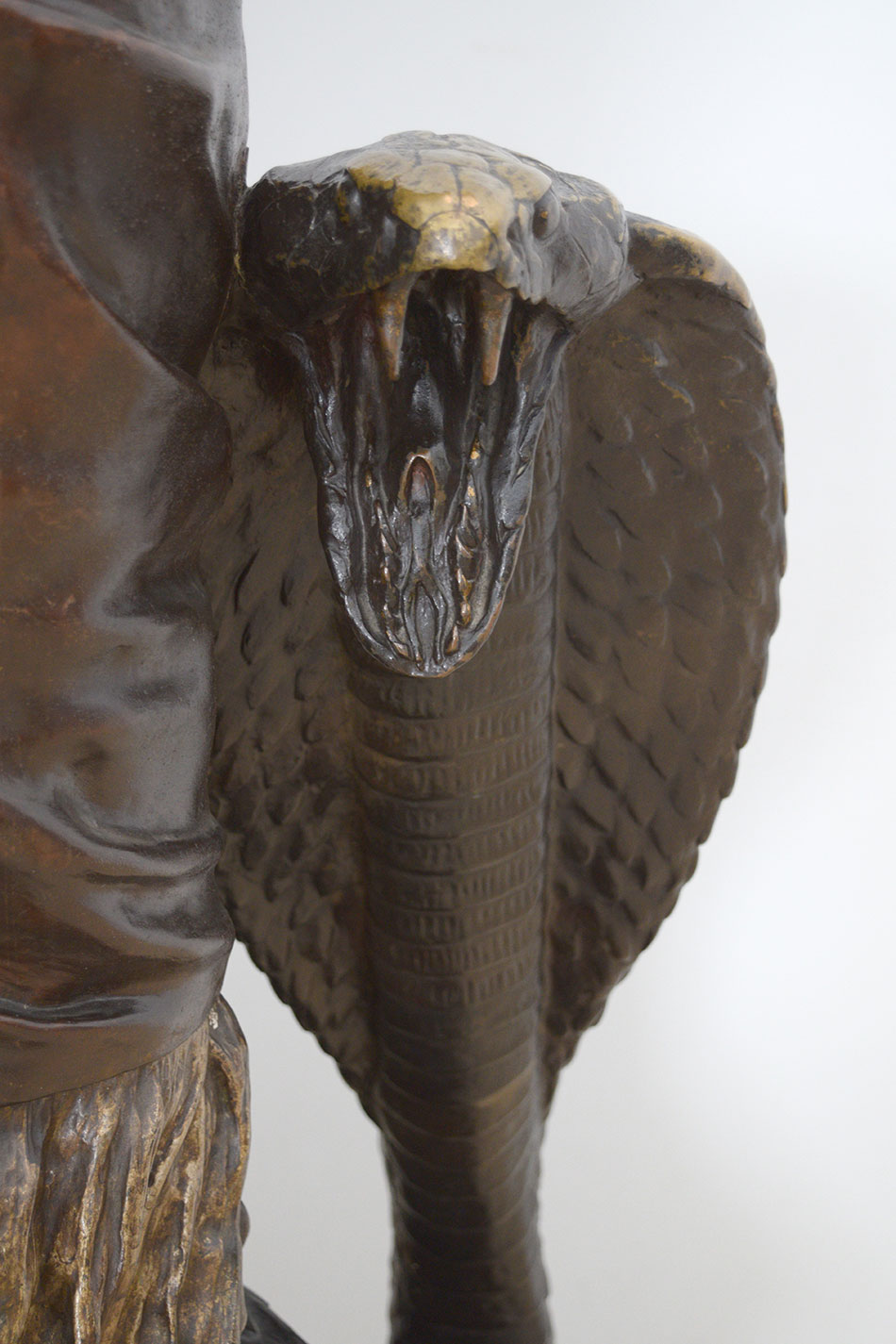
Gérôme viewed the work as a success, fulfilling his intention to take decorative art to a new level. Following the artist’s death in 1904 the statue continued to be an object of ridicule by the emerging leaders of abstract art.
Visitors to the Four Seasons weren’t laughing though. They were, instead, quietly prying her apart, popping the gems out of their bronze casing—notably the rubies and blue crystal on her breastplate. Bellona had now become a subject of attraction for both guests and the broader public. Passersby, reportedly, visited the hotel just to get a piece of her.
Paintings and statues of the Goddess were popular in the post-Renaissance period with a range of works created by prominent artists. Gérôme’s sculpture is the most extravagant representation executed by any artist including his contemporary Auguste Rodin who sculpted both marble and bronze statues and busts of the Goddess.
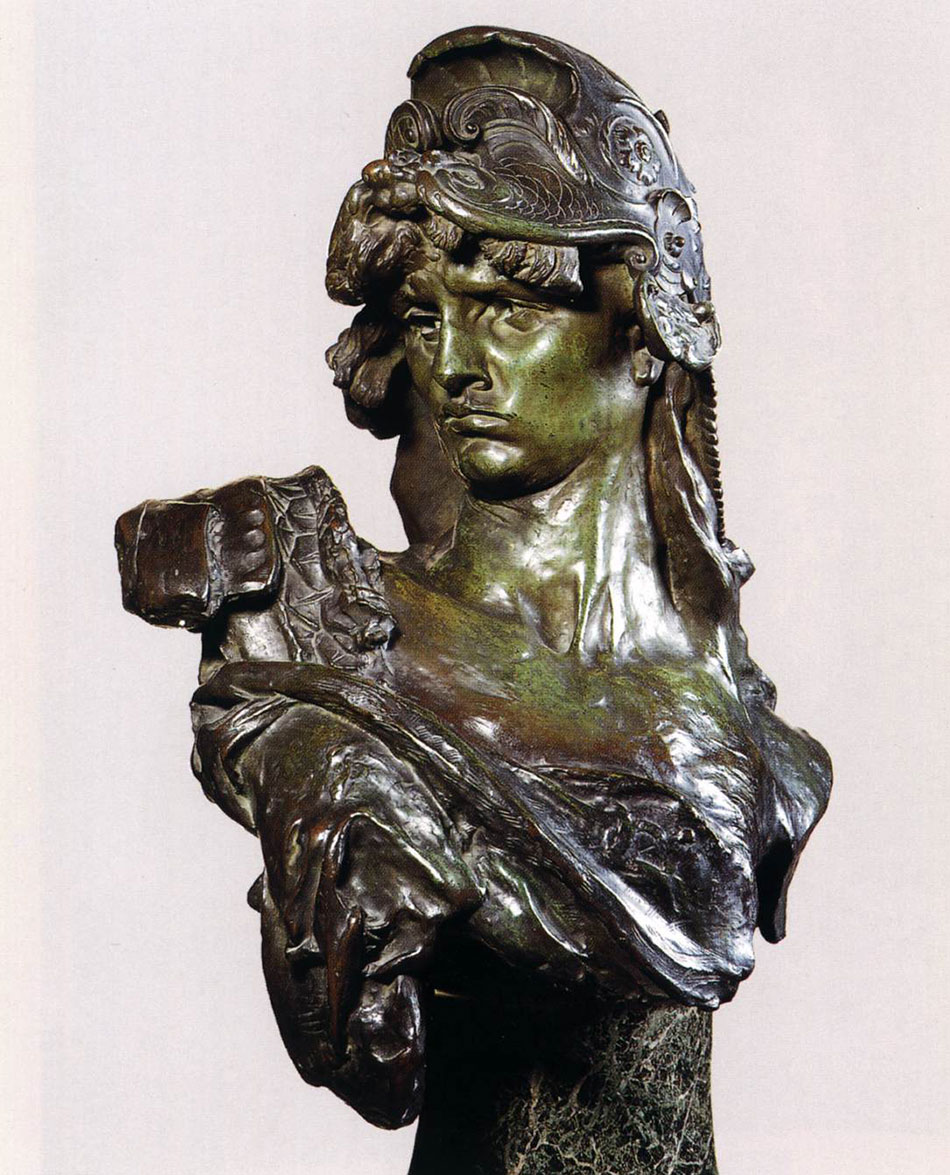
Unlike Gérôme though, his bronze and marble sculptures were neither bedecked with gems nor ridiculed. Her captivating appearance and reputation among Torontonians as an unlocked vault of precious gems inspired one individual to behead the monumental Goddess. As the staff of the Four Seasons calmly assisted guests, an unidentified individual ran through the front door and tore the head from the bronze torso, snapping the small pin that held the head in place and breaking her left arm in the process!
The Goddess remained headless and armless for several years before conservators were commissioned to restore the statue by reproducing the head and arm. After remaining headless, however, viewers were understandably shocked when Gérôme’s statue was reassembled and the new head replicating the original extravagance was attached. Viewers now shuddered where they were once amused. The replicated head with its gelatin flesh and emerald-coloured eyes eliminated the melancholy of the beheaded Goddess.
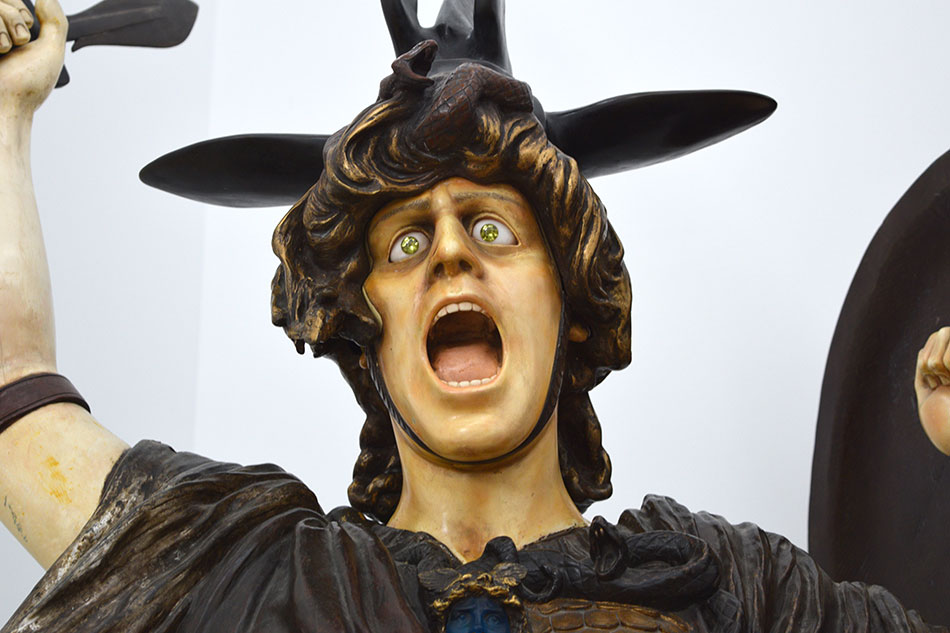
Artistic tastes and perceptions of decorative art changed significantly in the intervening century between the sculpture’s initial 1893 exhibition and 2000 when it was donated by Joey and Toby Tanenbaum to the AGH and briefly displayed as a whole again. The statue was exhibited headless until recently the staff at the AGH re-assembled the sculpture, reviving Bellona in part.
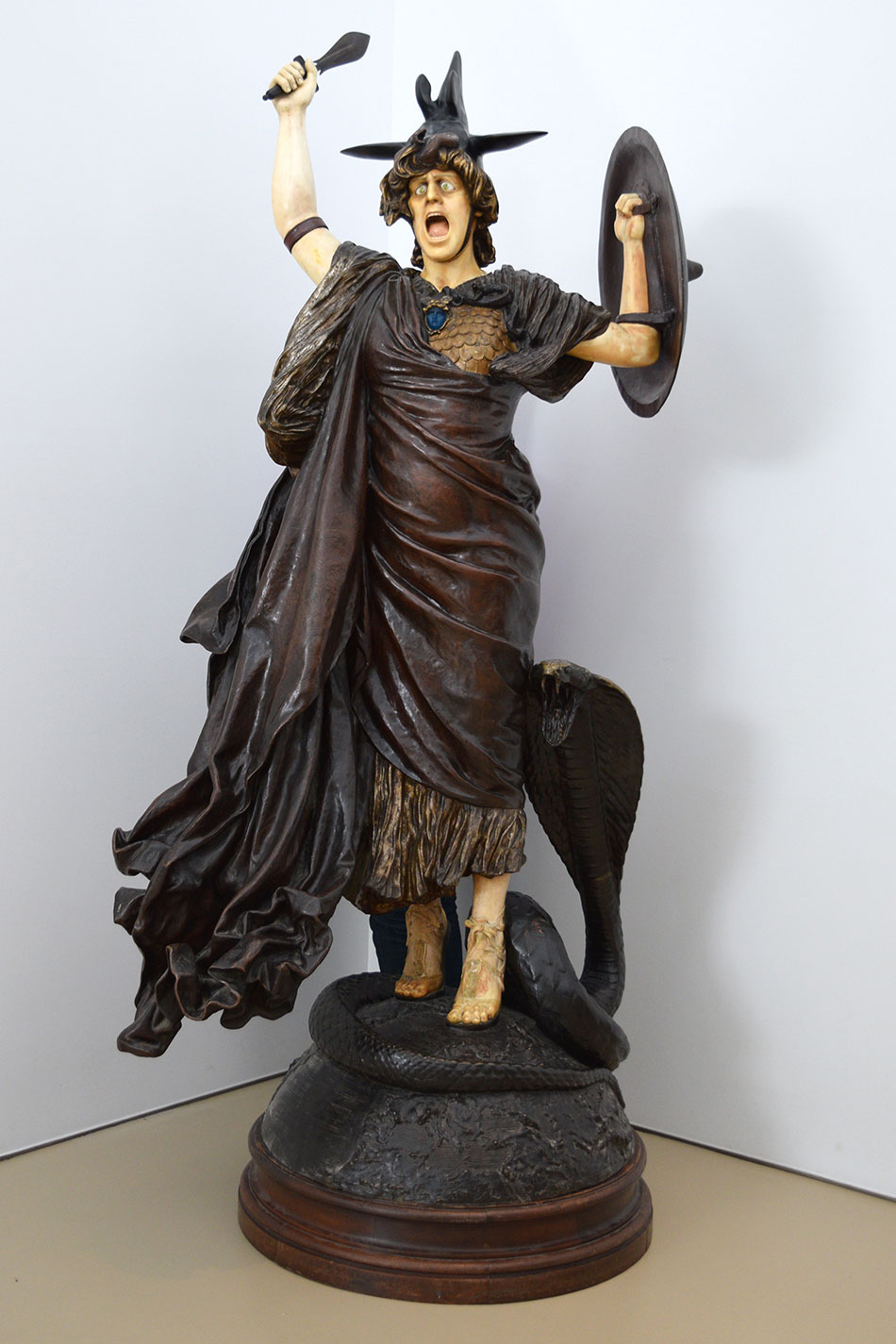
Bellona was on view on Gallery Level 2 as part of Art for a Century: 100 for the 100th. Admission to Gallery Level 2 is free courtesy of Orlick Industries.
